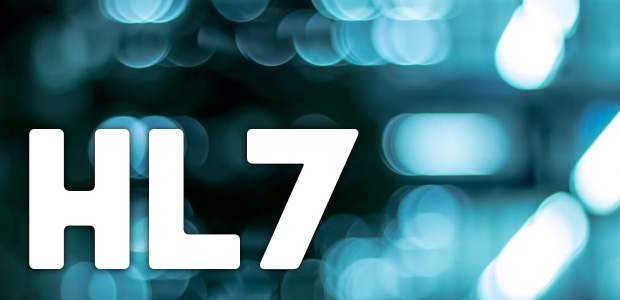HL7 (Health Level Seven) is a standard for swapping health information between medical applications. This standard identifies a format for the transmission of health-related information. Information transmitted using the HL7 standard is sent as a collection of one or more messages. Each message sends one record or item of health-related information.
Background on HL7 Format
 Two of the leading topics in healthcare IT are EHRs and interoperability.
Two of the leading topics in healthcare IT are EHRs and interoperability.
To maximize the value of EHRs, data sharing and thus interoperability, are critical. The problem occurs when communication between the various applications (e.g., radiology, laboratory or patient administration systems) and software is difficult to realize. Added difficulties take place when two different healthcare providers must share information.
As we just noted, to maximize value from EHRs, interoperability is vital. Having visibility over data that has been created somewhere else can be difficult to achieve, sometimes impossible if systems expose data in a proprietary way that makes sense only to them.
HL7 provides the necessary guidelines to help software vendors and healthcare providers store and share this essential data.
Why is HL7 Important for Healthcare Organizations?
Think about it. These days everyone talks about EMRs and EHRs. Yet, as important as these systems are, when it comes down to it, they’d be impractical without a standard for communicating with existing healthcare applications and facilities. That’s where HL7 comes into play.
HL7 is not just a component of these improvements in the daily functioning of healthcare, but possibly one of the most important factors. To use a web analogy, let’s say that EMRs and all such systems are equivalent to websites. They are incredibly powerful, and many people are working hard to produce the most useful tools.
However, just like the internet, these tools would be worthless if no one was able to connect to and actually view these sites. HL7 is what occurs behind the scenes, permitting healthcare systems to connect and share data.
Why was HL7 Developed in the First Place?
 In the past, data interchanges across different healthcare systems occurred through customized interfacing systems. These interfaces required a bunch of programming at the sending and receiving applications, which muddled the process. The problem with interfaces occur when healthcare teams and software vendors come up with new applications. Each of these different applications is created with no input or collaboration with other application systems.
In the past, data interchanges across different healthcare systems occurred through customized interfacing systems. These interfaces required a bunch of programming at the sending and receiving applications, which muddled the process. The problem with interfaces occur when healthcare teams and software vendors come up with new applications. Each of these different applications is created with no input or collaboration with other application systems.
As a result, several clinical interface specialists resolved to create a better and more cost-effective approach for interface application. A couple of acute hospitals and software vendors came together as a volunteer group to invent a standard way of building these interfaces. Their objective was to substantially shrink the price of building interfaces. This is how HL7 came into existence.
In fact, implementing HL7 resolved 80% of the clinical interfacing problem. There are many experts at interfacing healthcare systems specializing in HL7.
HL7 Standards Can Be Better Understood By Looking at the Specific Reference Categories
- Primary standards: These embody the most current standards used for system integration, interoperability and compliance.
- Foundational standards: These clarify and define the tools used to create the standards and the technology that people who execute HL7 standards must be aware of and manage.
- Clinical and administrative domains: This refers to particular messaging and document standards associated with clinical specialties and groups, and usually follow implementation of primary standards.
- EHR profiles: When managing electronic health records, this section provides models and profiles.
- Implementation guidelines: This is where reference and support documents produced to be used in unison with current standards are housed.
- Rules and reference: These include technical specs, programming structures and guidelines for developing software and standards.
- Education and awareness: HL7’s Draft Standards for Trial Use (DSTU), as well as current projects, resources and more are retained in this category.
What are the Benefits of HL7 Implementation for the Healthcare Provider?
As well as helping you enhance EHR systems and make them more cost-effective, HL7 offers many other benefits.
- Produces a specific, flexible, global standard for the movement of clinical data.
- Permits easy sharing of intricate and private patient information data, including records, lab reports, test results, etc., via clinical applications.
- Smoothens the course of electronic data exchange so that the end-user can understand the data.
- Makes integrated healthcare solutions doable, enhancing the care services delivered by healthcare providers.
- HL7 standards are healthcare-specific formatted messages that support various healthcare system integrations and interoperability. These standards allow EHRs to communicate with many systems running outside the EHR.
Why Should I Care about HL7?
Understanding HL7 is crucial because the standards process is currently developing outside of the IT community. Yet, HL7 standards act as a conduit between modern healthcare services and advancing information technology. Contact Medwave today to find out more on how we can help your medical practice utilize HL7 with great efficiency and efficacy.

